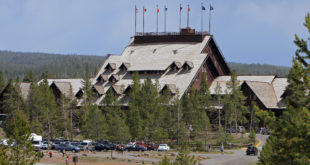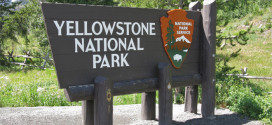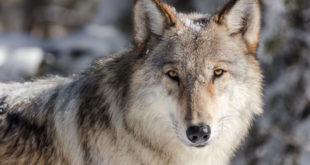Like almost everything about wolf behavior, wolf attacks on humans are a matter of controversy. Movies and television routinely show people attacked by wolves, which leaves the impression that wolves are extremely dangerous. Then there is Kevin Costner doing the twist with ‘Two Socks’ in the movie Dances with Wolves. Many studies on wolf attacks have been done over the years; there is not much agreement. However, there is consensus that world-wide there have been many credible attacks on humans by wolves, and some cases have resulted in death. The issue is not ‘Does this occur?’ but ‘How significant is it, specifically, in Yellowstone?’
Wolves are predators, of course; being carnivores they hunt and kill for meat. In Yellowstone, similar predators are bears, mountain lions, and coyotes. From the human perspective, all larger predators are potentially dangerous. Common sense suggests that if you see a bear, a mountain lion, or a wolf pack – you do your best to avoid them.
Fortunately, human attacks by wolves are extremely rare. How rare? This question gets into the messy business of defining what constitutes ‘a wolf attack’ and the credibility of each event. A reasonable source for information is the world-wide study of wolf attacks on humans done by the Norwegian Institute for Nature Research (NINA) in 2002. The finding of the report was that during the 100 years of the 20th century there were between twenty and thirty attacks in North America (including Alaska and Canada, which have relatively high populations of wolves). Of these, three were fatal, all because of rabies. No attacks have been recorded in Yellowstone since the reintroduction of wolves more than a decade ago. For comparison, during the 20th century there have been 71 fatal grizzly (brown) bear attacks in North America. Each year in the United States, 16-18 people die from dog attacks.
In terms of statistics, it is much safer to hike the trails of Yellowstone than to drive the roads. Experienced outdoors people will tell you that in Yellowstone, it’s the bears that are worrisome. Because of their omnivorous eating habits, they are much more likely to be where humans go. Wolves, on the other hand, avoid humans and are notoriously difficult even to see in the wild. Not that it’s impossible to be in the wrong place at the wrong time with a pack of wolves; but it hasn’t happened yet and it isn’t likely.
 Yellowstone Insider Your Complete Guide to America's First National Park
Yellowstone Insider Your Complete Guide to America's First National Park






